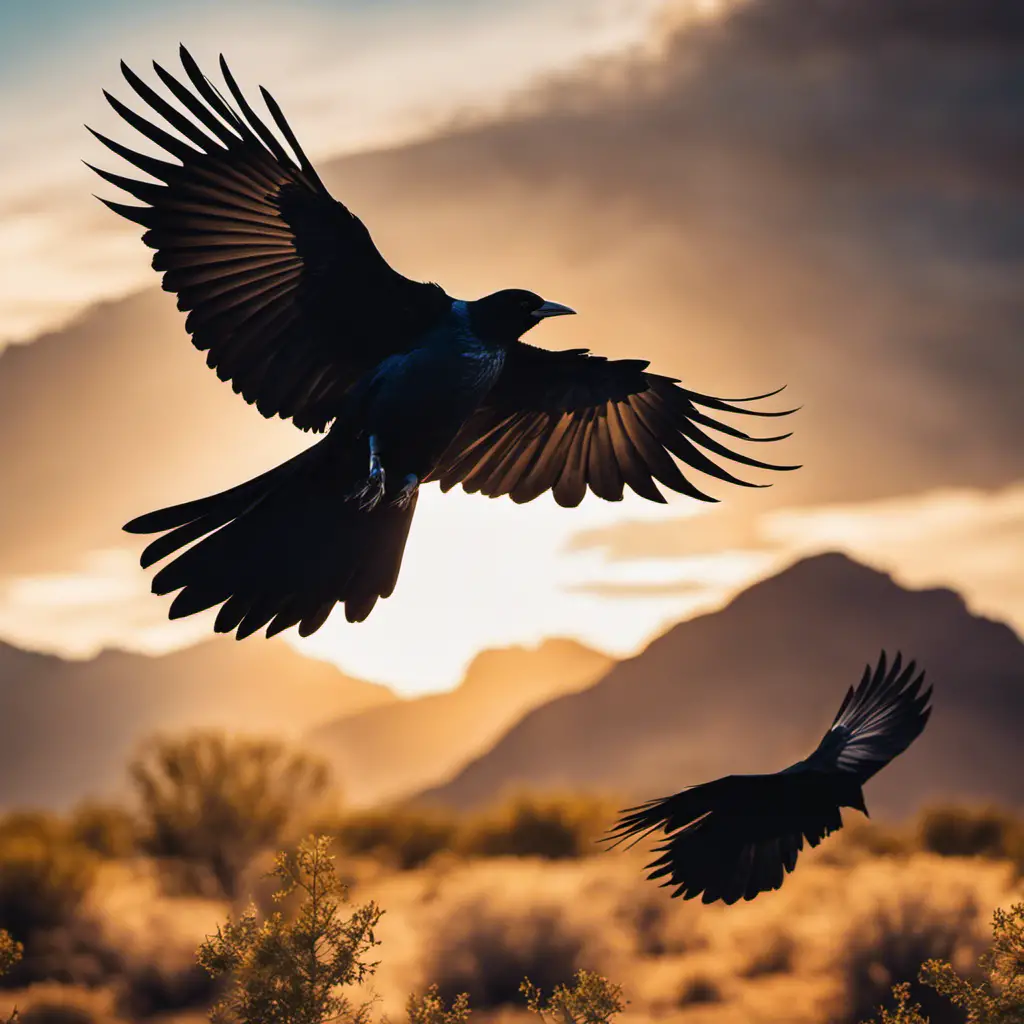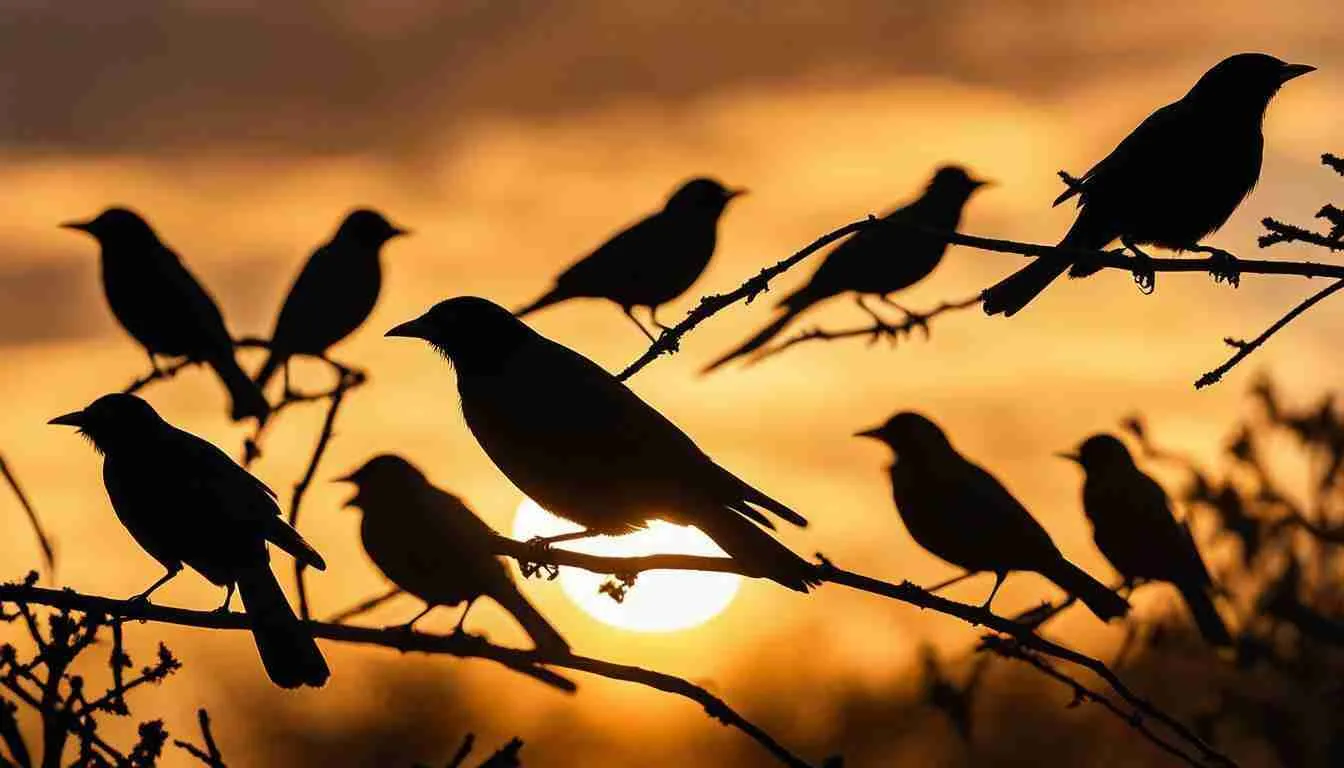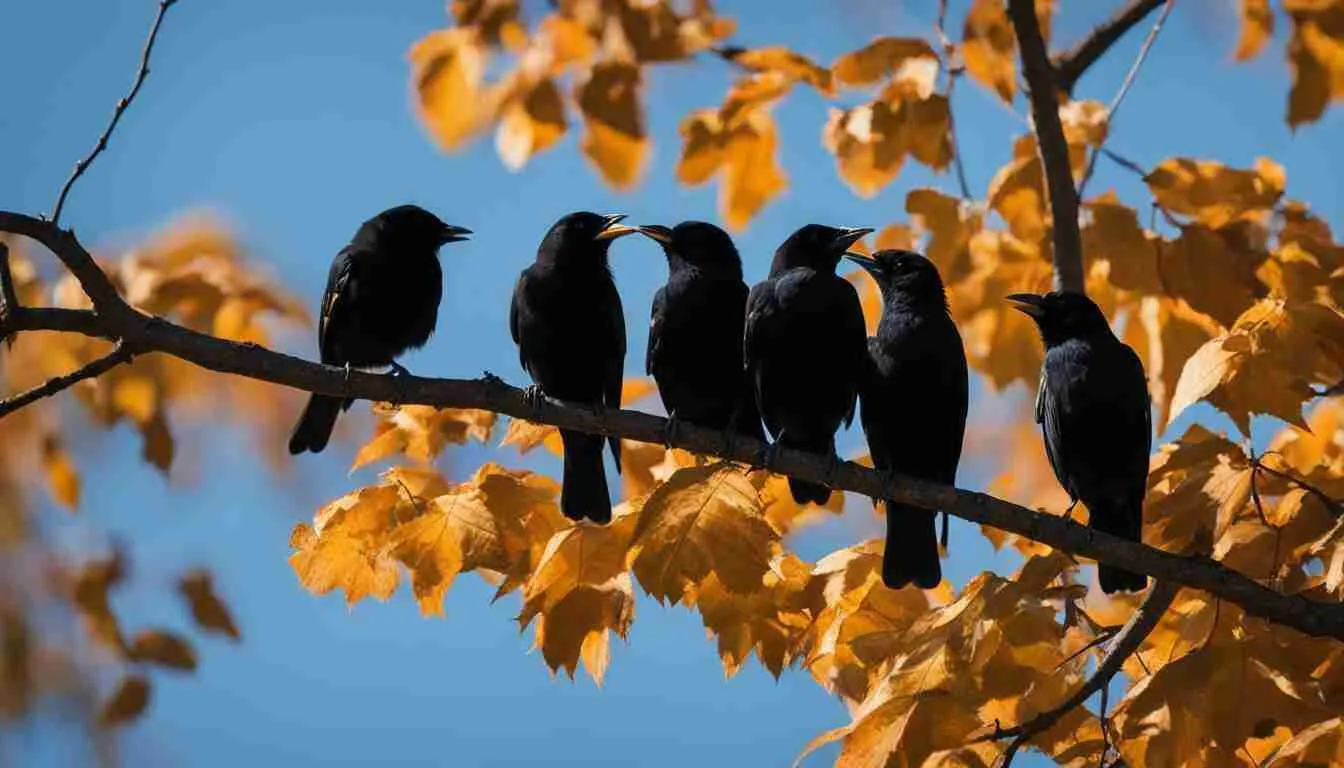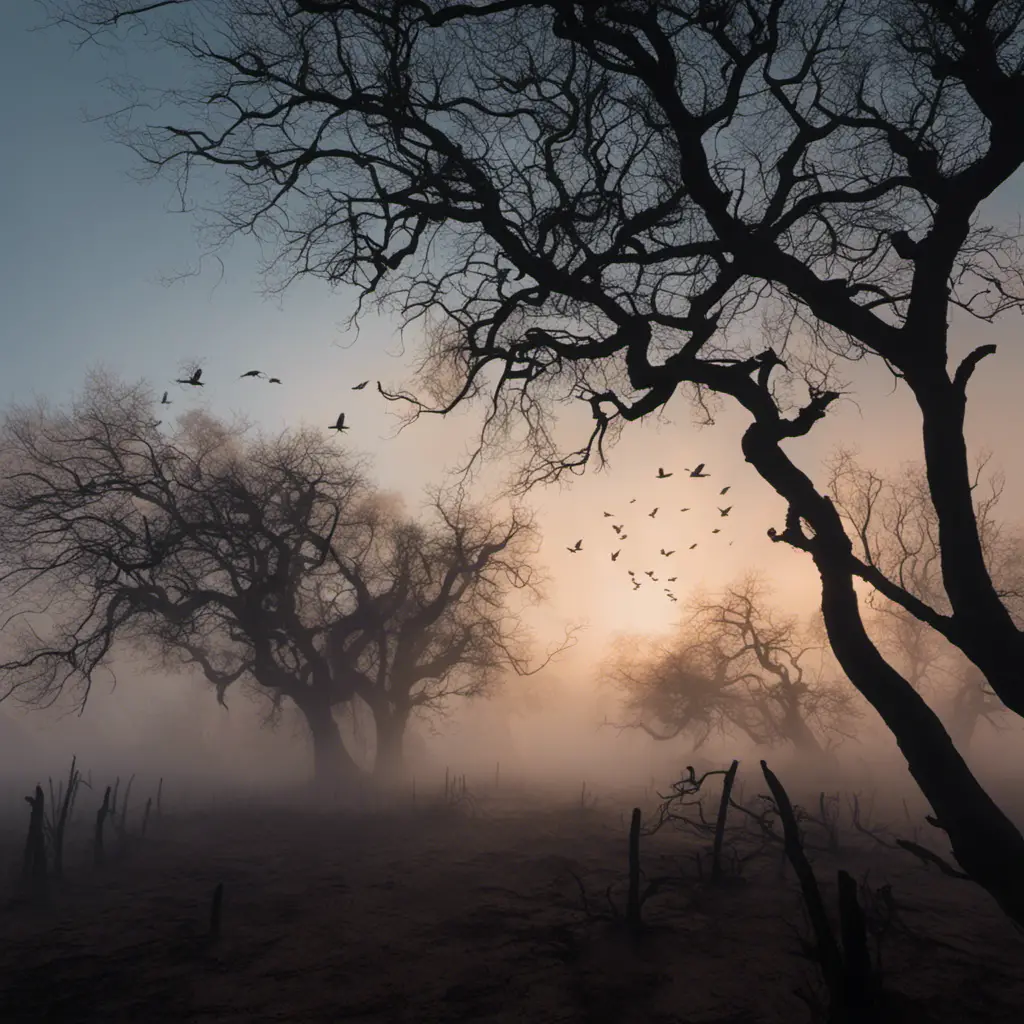In the diverse avian landscape of Arizona, several species of black birds thrive. This article explores the notable black bird species found in the region, including the Red-winged Blackbird, Brewer’s Blackbird, Yellow-Headed Blackbird, European Starling, Brown-Headed Cowbird, Bronzed Cowbird, Common Raven, Rusty Blackbird, and Common Grackle.
Through a scientific and objective lens, this concise overview provides readers with detailed information on each species, catering to an audience seeking a deeper understanding of the fascinating world of black birds in Arizona.
Key Takeaways
- Red-winged Blackbirds, Brewer’s Blackbirds, and Yellow-Headed Blackbirds are all black bird species that can be found in Arizona.
- These black bird species have distinct characteristics and behaviors, such as nesting in dense vegetation close to water, forming large flocks, and exhibiting unique vocalizations.
- European Starlings and Brown-Headed Cowbirds are also black bird species found in Arizona, with the former being highly adaptable and successful colonizers, while the latter is known for its brood parasitism behavior.
- The Great-tailed Grackle, another black bird species in Arizona, is known for its vocal mimicry behavior and can be found in various habitats, including urban areas.
Red-winged Blackbird
The Red-winged Blackbird is a common sight in marshes and wetlands throughout North America. This medium-sized blackbird, scientifically known as Agelaius phoeniceus, is easily recognizable by the bright red patches on the shoulders of the males. Females, on the other hand, have a streaked brown appearance.
Red-winged Blackbirds are highly social birds and often gather in large flocks. They are known for their distinctive vocalizations, consisting of a variety of calls and songs. Their behavior patterns include territoriality, with males defending their nesting territories aggressively.
They build their nests in dense vegetation, usually close to water. This habitat preference is due to their reliance on marshes and wetlands for foraging and breeding. Red-winged Blackbirds primarily feed on insects, seeds, and small aquatic animals, making wetlands an ideal hunting ground for them.
Brewer’s Blackbird
Although Brewer’s Blackbirds are predominantly found in western North America, they have been increasingly observed expanding their range into other regions. This expansion is likely due to a combination of factors including climate change and habitat alteration. Brewer’s Blackbirds are known for their adaptability and ability to exploit a wide range of habitats, including urban areas and agricultural fields.
Behavior and Habitat of Brewer’s Blackbird:
- Brewer’s Blackbirds are highly social birds, often forming large flocks outside of the breeding season.
- They are opportunistic feeders, consuming a variety of foods including insects, seeds, fruits, and human leftovers.
- They build their nests in trees or shrubs, often near water sources.
- They are known for their distinctive vocalizations, which include a variety of calls and songs.
Threats to Brewer’s Blackbird Population:
- Loss of suitable habitat due to urbanization and agricultural expansion.
- Pesticide use, which can lead to declines in insect populations, a major food source for the birds.
- Climate change, which can disrupt migration patterns and alter the availability of food resources.
- Competition and hybridization with other blackbird species, such as the Red-winged Blackbird.
Yellow-Headed Blackbird
Due to their preference for wetland habitats, Yellow-Headed Blackbirds are often observed nesting among cattail reeds and foraging near marshy areas. These striking birds are known for their distinctive yellow head and black body, making them easily recognizable in their natural habitat.
Yellow-Headed Blackbirds are primarily found in western North America, with a significant population residing in Arizona. They are highly social birds, forming large colonies during the breeding season. Males can be quite territorial and will defend their nesting area vigorously.
Conservation efforts for the Yellow-Headed Blackbird have focused on preserving and restoring wetland habitats, as these areas are crucial for their survival. Wetland conservation initiatives aim to provide suitable nesting and foraging sites for these birds, as well as maintaining the overall health of the ecosystem.
European Starling
While the Yellow-Headed Blackbird is known for its distinctive appearance and preference for wetland habitats, the European Starling, on the other hand, is a common and adaptable bird species found across a wide range of environments in Europe and North America. The European Starling has a diverse range of habitat preferences, allowing it to thrive in urban areas, farmlands, forests, and grasslands. This adaptability is due to their ability to modify their nesting habits, diet, and social behavior to suit different environments.
Breeding behavior of the European Starling is also noteworthy. They are highly gregarious birds and often form large flocks during the breeding season. They build their nests in tree cavities, crevices, and man-made structures, such as buildings and bridges. The female starling lays 4-6 eggs and both parents participate in incubation and feeding the young.
The abundance and adaptability of the European Starling have made it a successful colonizer in many parts of the world, often outcompeting native bird species for resources.
Brown-Headed Cowbird
The Brown-Headed Cowbird, known for its brood parasitism behavior, lays its eggs in the nests of other bird species, often resulting in the displacement of the host’s own offspring. This reproductive strategy has significant ecological implications.
By laying their eggs in the nests of other birds, cowbirds avoid the costs associated with raising their own young, allowing them to allocate more energy towards mating and reproduction. However, this behavior has negative consequences for the host species.
The host’s own offspring may suffer reduced survival and growth rates due to competition for resources, leading to a decline in their population sizes. Additionally, the presence of cowbird eggs in the nests can cause host parents to abandon their own eggs or young.
Understanding the ecological impact and mating behavior of the Brown-Headed Cowbird is crucial for developing conservation strategies to mitigate its effects on vulnerable bird populations.
Great-tailed Grackle
An interesting characteristic of the Great-tailed Grackle is its ability to mimic a wide range of sounds, including the calls of other bird species. This vocal mimicry is a behavior pattern commonly observed in this species. The Great-tailed Grackle is known for its loud and raucous calls, which can be heard from a distance. It is often found in open habitats such as agricultural fields, grasslands, and urban areas. However, this bird does show a preference for certain types of habitats.
Here are four key points about the behavior patterns and habitat preferences of the Great-tailed Grackle:
Behavior patterns:
- Vocal mimicry is a common behavior observed in this species.
- Males often gather in large groups and perform elaborate displays to attract females during the breeding season.
Habitat preferences:
- The Great-tailed Grackle is adaptable and can be found in a variety of habitats, including urban areas.
- It prefers open habitats such as agricultural fields and grasslands.
Understanding the behavior patterns and habitat preferences of the Great-tailed Grackle can provide valuable insights into its ecological role and conservation needs. Further research is needed to explore the extent and function of vocal mimicry in this species and its impact on social dynamics and mate selection.
Bronzed Cowbird
A male Bronzed Cowbird can be easily identified by its striking iridescent plumage and is known for its brood parasitism behavior, where it lays its eggs in the nests of other bird species. This behavior allows the cowbird to avoid the responsibilities of building a nest and rearing its own young.
The mating behavior of the Bronzed Cowbird is unique and fascinating. Males display their plumage and engage in elaborate courtship displays to attract females. Once a female selects a mate, she will lay her eggs in the nests of other birds, such as the Yellow Warbler or the House Finch.
The cowbird eggs often hatch earlier than the host’s eggs, giving the cowbird chicks a competitive advantage for food and attention from the host parents. This parasitic nesting habit has both positive and negative impacts on the host bird populations, as it can disrupt their reproductive success but also contribute to the overall diversity of bird species in the ecosystem.
Common Raven
In Arizona, the Bronzed Cowbird’s brood parasitism behavior and the Common Raven’s intelligent problem-solving abilities are two fascinating aspects of black birds’ behavior.
The Common Raven (Corvus corax) is a highly intelligent bird known for its complex social behavior and problem-solving skills. Here are four interesting facts about the behavior of the Common Raven:
Problem-solving abilities: The Common Raven has been observed using tools to obtain food, such as dropping stones into a container to raise the water level and reach floating food. This demonstrates their ability to think critically and solve problems.
Vocal communication: Ravens have an extensive vocal repertoire and can mimic other bird species, as well as human speech. They use different calls and vocalizations to communicate with each other, conveying important information about food sources, predators, and territorial boundaries.
Playfulness: Ravens are known for their playful behavior. They engage in aerial acrobatics, sliding down snow slopes, and even playing with other animals. This behavior is considered a form of social bonding and cognitive stimulation.
Habitat adaptation: Common Ravens are adaptable birds and can be found in a wide range of habitats, from deserts to forests. They have even successfully adapted to urban environments, where they scavenge for food in trash cans and dumpsters.
Understanding the behavior of the Common Raven and its habitat preferences can provide valuable insights into the ecological dynamics of black birds in Arizona.
Rusty Blackbird
The decline in population numbers of the Rusty Blackbird is a cause for concern among ornithologists studying black bird species. Rusty Blackbirds are migratory birds that breed in the boreal forests of North America and winter in the southeastern United States.
Their population has been steadily declining over the past few decades, with estimates suggesting a decline of up to 85%. This decline is attributed to a combination of factors, including habitat loss, pollution, and climate change.
To address this issue, conservation efforts are underway to protect and restore the breeding and wintering habitats of Rusty Blackbirds. Additionally, research is being conducted to better understand their migration patterns and the factors that influence their survival during migration.
Common Grackle
During breeding season, Common Grackles can be found in large numbers throughout North America. Their distinct iridescent plumage and raucous calls make them a familiar sight and sound in urban and suburban areas. Understanding the behavior and migration patterns of these birds is crucial to comprehending their impact on local ecosystems. Here are four key points to consider:
Behavior and Migration Patterns: Common Grackles are highly social birds that form large flocks during the breeding season. They exhibit complex vocalizations and engage in cooperative foraging behaviors. These birds are known for their long-distance migrations, with some individuals traveling thousands of miles each year.
Impact on Local Ecosystems: Common Grackles are opportunistic feeders and can have both positive and negative impacts on local ecosystems. While they help control insect populations, they can also depredate crops and compete with native bird species for resources.
Role in Agricultural Settings: Common Grackles are often considered agricultural pests due to their habit of feeding on crops such as corn and sunflowers. Their feeding behavior can result in significant economic losses for farmers.
Interactions with Other Bird Species: Common Grackles are known to compete with other bird species, particularly smaller songbirds, for nesting sites and food resources. They can also display aggressive behavior towards other bird species, leading to potential disruptions in local bird communities.
Understanding the behavior, migration patterns, and ecological interactions of Common Grackles is essential for managing their presence in urban, suburban, and agricultural landscapes. By studying their impact on local ecosystems, scientists and conservationists can develop strategies to mitigate any negative effects and promote coexistence with these charismatic birds.
Frequently Asked Questions
What Is the Average Lifespan of a Red-Winged Blackbird?
The average lifespan of a red-winged blackbird is approximately 4-5 years. Known for their distinctive red shoulder patches, these birds engage in elaborate mating rituals and exhibit migratory patterns. However, their populations are impacted by European starlings and the behavior of brown-headed cowbirds.
Are Brewer’s Blackbirds Migratory Birds?
Brewer’s blackbirds are migratory birds, with distinct migration patterns. They typically breed in the western United States and Canada during the summer, then migrate to their winter habitat in the southern United States and Mexico.
Do Yellow-Headed Blackbirds Have Any Unique Mating Rituals?
Yellow-headed blackbirds are known for their unique mating behaviors and courtship displays. These behaviors include vocalizations, wing displays, and nest-building rituals. These rituals are important for attracting mates and establishing breeding territories.
How Can European Starlings Negatively Impact Local Bird Populations?
European starlings can have a negative impact on local bird populations through competition for nesting sites, food, and resources. This can lead to a decline in native bird species. Conservation efforts are important to protect black bird species from such negative impacts.
What Is the Significance of the Brown-Headed Cowbird’s Parasitic Breeding Behavior?
The brown-headed cowbird’s parasitic breeding behavior is significant due to its impact on host species. This co-evolutionary dynamic, known as brood parasitism, involves the cowbird laying its eggs in the nests of other birds, leading to host rejection behavior.
Are Herons Considered as Black Birds in Arizona?
In Arizona, herons found in arizona are not considered as black birds due to their distinct physical characteristics. While they may have dark-colored feathers, their overall appearance, long legs, and slender bodies set them apart from true black birds commonly seen in this region. These elegant herons bring a unique charm to the Arizona wildlife with their graceful presence.
Conclusion
In conclusion, Arizona is home to a diverse range of black bird species. These include the Red-winged Blackbird, Brewer’s Blackbird, Yellow-Headed Blackbird, European Starling, Brown-Headed Cowbird, Bronzed Cowbird, Common Raven, Rusty Blackbird, and Common Grackle. These birds contribute to the ecological balance and biodiversity of the region.
Understanding their behavior, habitats, and conservation needs is crucial for maintaining their populations and preserving the natural environment they inhabit. Further research and conservation efforts are essential to ensure the continued presence of these black bird species in Arizona.

An avid ornithologist, zoologist and biologist with an unwavering passion for birds and wild animals.
Dr. Wilson’s journey in ornithology began in childhood and led him to obtain a Ph.D. in Ornithology from the prestigious Avian Research Institute. He has worked closely with renowned experts in the field and conducted extensive research and field studies globally.




